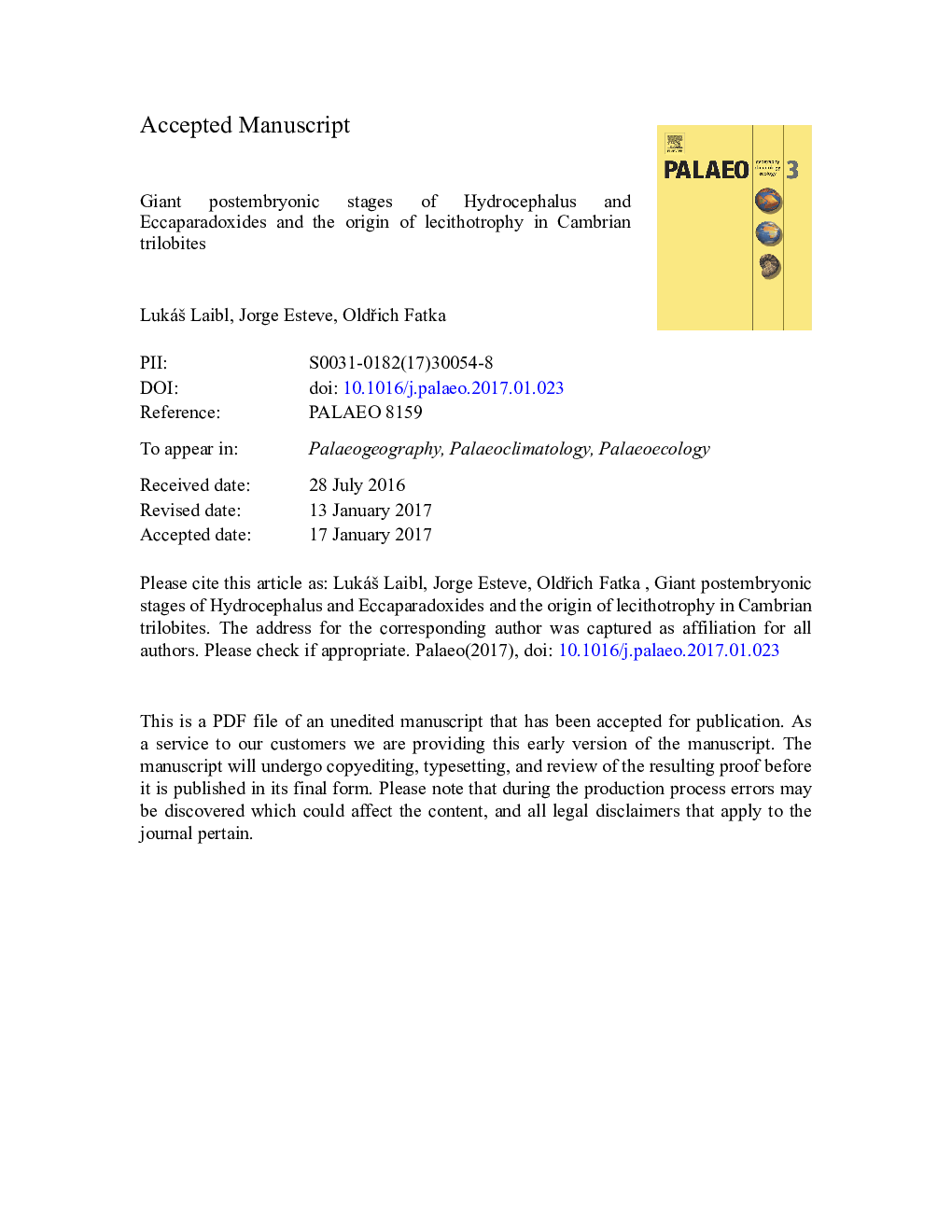| کد مقاله | کد نشریه | سال انتشار | مقاله انگلیسی | نسخه تمام متن |
|---|---|---|---|---|
| 5755914 | 1622122 | 2017 | 25 صفحه PDF | دانلود رایگان |
عنوان انگلیسی مقاله ISI
Giant postembryonic stages of Hydrocephalus and Eccaparadoxides and the origin of lecithotrophy in Cambrian trilobites
ترجمه فارسی عنوان
مراحل پسامبریونی غول پیکر هیدروسفالوس و اکپارادوکسیدها و منشاء لسیتوتروفیسم در تریلوبیتهای کامبوری
دانلود مقاله + سفارش ترجمه
دانلود مقاله ISI انگلیسی
رایگان برای ایرانیان
موضوعات مرتبط
مهندسی و علوم پایه
علوم زمین و سیارات
فرآیندهای سطح زمین
چکیده انگلیسی
The early postembryonic stages of the Cambrian paradoxidid trilobites Hydrocephalus carens and Eccaparadoxides pusillus show an extraordinary morphology, which is characterised by an inflated glabella and reduced fixigenae. Moreover, the earliest known instars of both taxa are significantly larger than postembryonic instars of most of other Cambrian trilobites. Based on the size and morphology, we suggest that H. carens possessed a lecithotrophic type of development. This hypothesis is supported by growth patterns, accelerated development and frequency of distribution of H. carens. Lecithotrophic development is also proposed for E. pusillus, although the data are less convincing in this case. Analysis of early postembryonic instars of other Cambrian trilobites shows a correlation between their size and palaeogeographic distribution. The appearance of the largest postembryonic instars, including H. carens and E. pusillus, correlates with higher latitudes along the West Gondwanan margin. The specific environment in this area associated with unpredictable production of planktonic food is probably responsible for evolution of lecithotrophic development in these trilobite taxa.
ناشر
Database: Elsevier - ScienceDirect (ساینس دایرکت)
Journal: Palaeogeography, Palaeoclimatology, Palaeoecology - Volume 470, 15 March 2017, Pages 109-115
Journal: Palaeogeography, Palaeoclimatology, Palaeoecology - Volume 470, 15 March 2017, Pages 109-115
نویسندگان
LukáÅ¡ Laibl, Jorge Esteve, OldÅich Fatka,
